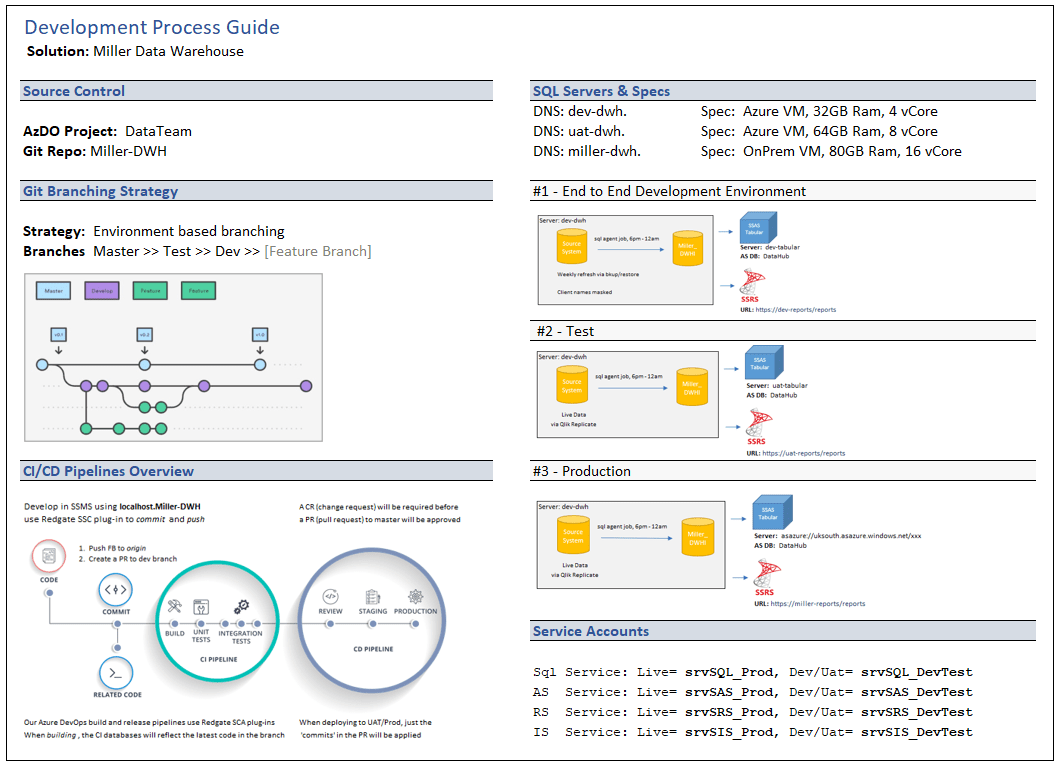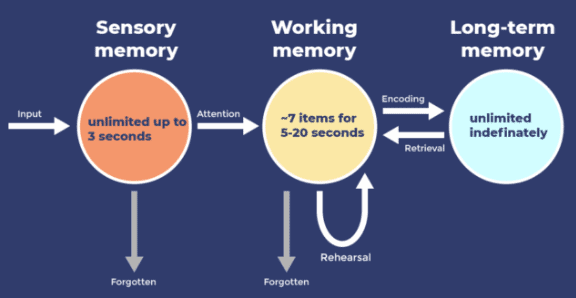Solution Summary cards are the name I have given to simple 1-page documents we provide to developers to get up-to-speed on a particular solution.
The primary use-case for these cards is to provide better on-boarding for new team members.
An additional benefit is that crafting these short summaries forces people to review how your teams are working and you will often start seeing areas which would benefit from standardization or simplification.
An example of one these cards, in this case for a simple Data Warehouse implementation, can be seen below:

These cards are not intended to replace full technical guides, but to just capture the essential information that you would often need at a glance and prevent scrolling back and forth through larger documents.
Boost productivity by reducing ‘cognitive load’
Cognitive load relates to the amount of information your brain can use to figure stuff out. Since your working memory has a very limited capacity, we should avoid overloading it with unnecessary information.
How working memory fits into the overall cognitive process can be seen in this Information Processing Model.

Developers want to focus on solving real-problems, for real-people, in the real-world. All the ‘other stuff’ we contend with is just a distraction.
Having to fill up the brain’s mental model with unnecessary information will drain the energy and productivity of your teams.
For example, we are able to use our cognitive faculties more efficiently if we know we can quickly reference (instead of memorizing) the following information
- Where do I commit or deploy code?
- What happens when I commit?
- How up to date is the data in each environment?
- Which downstream systems will be affected by my changes?
Even without these cards, after a while, people will learn all the server details, processes and nuances – but it comes at a cost in the form of a lot of wasted effort.
Summary
This is not a revolutionary new idea, however, I wanted to share an example of what I do in case it inspires others.
For this work, understanding cognitive load helped me to find the balance between detail and usability.
There are 3 types of cognitive load and the ultimate goal of these ‘cards’ is to reduce extraneous load.
- Intrinsic Load – i.e. The SQL skills required to solve the problem
- Extraneous Load – i.e. Unnecessary distraction such as a requirement buried within a long chain of emails
- Germane Load – i.e. The load required to take information from working memory into long term memory
If you would like to know more, I found the following two resources informative:
YouTube: Hacking Your Head: Managing Information Overload, by Jo Pearce.
Article: https://www.gerardfriel.com/instructional-design/cognitive-load-theory/


Load comments